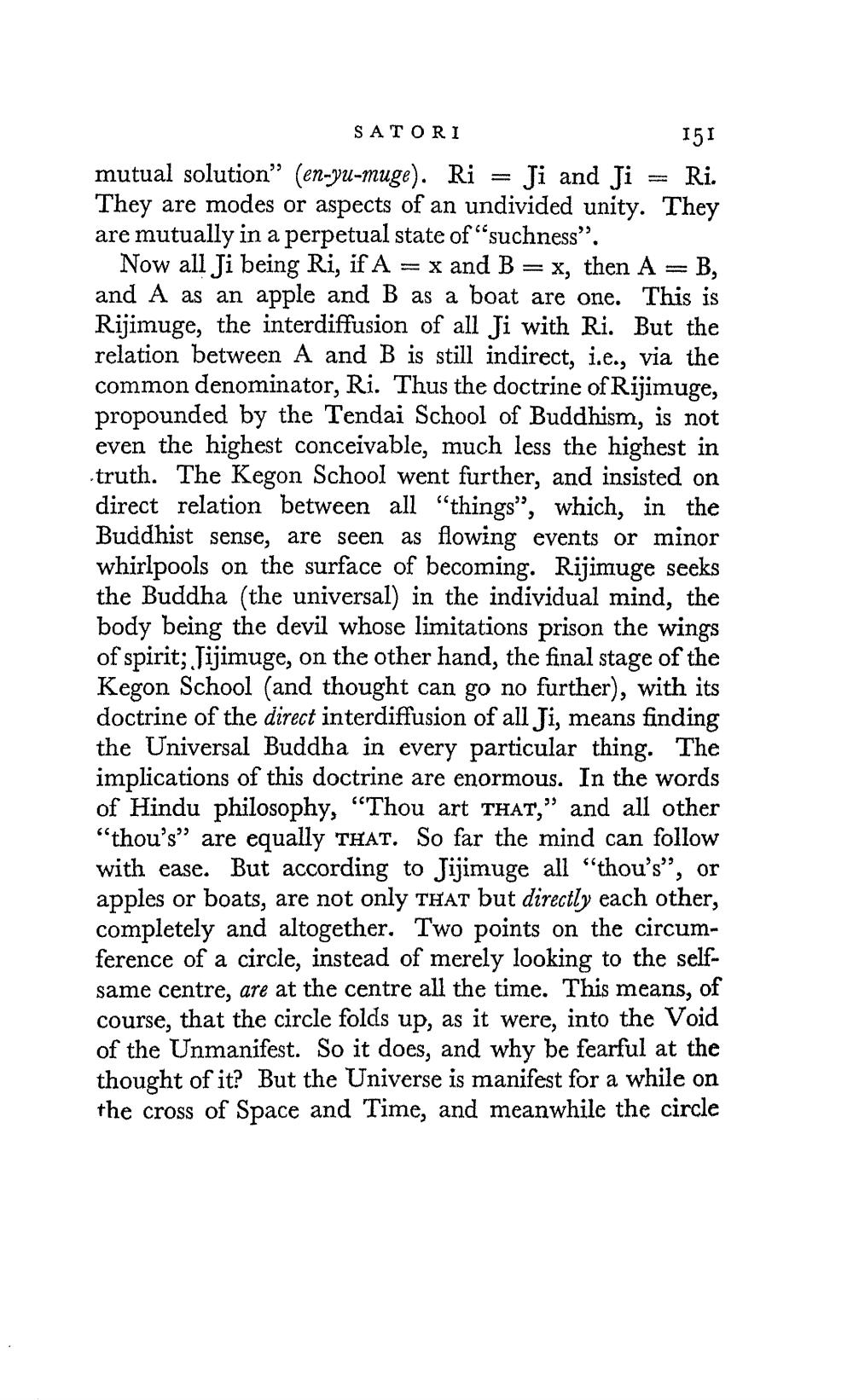________________
SATORI
151 mutual solution" (en-yu-muge). Ri = Ji and Ji = Ri. They are modes or aspects of an undivided unity. They are mutually in a perpetual state of "suchness".
Now all Ji being Ri, if A = x and B = x, then A = B, and A as an apple and B as a boat are one. This is Rijimuge, the interdiffusion of all Ji with Ri. But the relation between A and B is still indirect, i.e., via the common denominator, Ri. Thus the doctrine of Rijimuge, propounded by the Tendai School of Buddhism, is not even the highest conceivable, much less the highest in truth. The Kegon School went further, and insisted on direct relation between all “things", which, in the Buddhist sense, are seen as flowing events or minor whirlpools on the surface of becoming. Rijimuge seeks the Buddha (the universal) in the individual mind, the body being the devil whose limitations prison the wings of spirit; Jijimuge, on the other hand, the final stage of the Kegon School (and thought can go no further), with its doctrine of the direct interdiffusion of all Ji, means finding the Universal Buddha in every particular thing. The implications of this doctrine are enormous. In the words of Hindu philosophy, “Thou art THAT," and all other “thou’s” are equally THAT. So far the mind can follow with ease. But according to Jijimuge all "thou's”, or apples or boats, are not only THAT but directly each other, completely and altogether. Two points on the circumference of a circle, instead of merely looking to the selfsame centre, are at the centre all the time. This means, of course, that the circle folds up, as it were, into the Void of the Unmanifest. So it does, and why be fearful at the thought of it? But the Universe is manifest for a while on the cross of Space and Time, and meanwhile the circle




